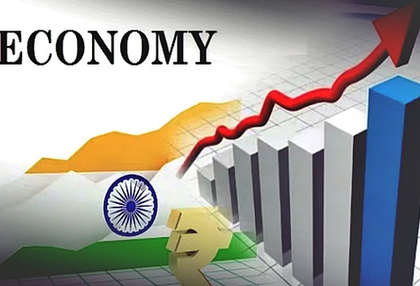World Bank pegs India's growth at 6.3 pc for FY26, country remains fastest growing economy
By IANS | Updated: June 10, 2025 21:33 IST2025-06-10T21:28:55+5:302025-06-10T21:33:28+5:30
Washington, June 10 The World Bank on Tuesday kept India's economic growth projection at 6.3 per cent for ...

World Bank pegs India's growth at 6.3 pc for FY26, country remains fastest growing economy
Washington, June 10 The World Bank on Tuesday kept India's economic growth projection at 6.3 per cent for FY 2025-26, as the country remains the fastest growing economy globally.
"In the next two fiscal years, starting in FY2026/27, growth is expected to recover to 6.6 per cent a year, on average, partly supported by robust services activity contributing to a pickup in exports," said the World Bank in its ‘Global Economic Prospects’ report.
In India, growth moderated in FY2024/25 (April 2024 to March 2025), partly reflecting a deceleration in industrial output growth.
"However, growth in construction and services activity remained steady, and agricultural output recovered from severe drought conditions, supported by resilient demand in rural areas," said the World Bank.
Meanwhile, heightened trade tensions and policy uncertainty are expected to drive global growth down this year to its slowest pace since 2008 outside of outright global recessions.
The turmoil has resulted in growth forecasts being cut in nearly 70 per cent of all economies — across all regions and income groups.
"Global growth is projected to slow to 2.3 per cent in 2025, nearly half a percentage point lower than the rate that had been expected at the start of the year," said the World Bank.
"A global recession is not expected. Nevertheless, if forecasts for the next two years materialise, average global growth in the first seven years of the 2020s will be the slowest of any decade since the 1960s," it added.
"Outside of Asia, the developing world is becoming a development-free zone," said Indermit Gill, the World Bank Group’s Chief Economist and Senior Vice President for Development Economics.
"It has been advertising itself for more than a decade. Growth in developing economies has ratcheted down for three decades—from 6 per cent annually in the 2000s to 5 per cent in the 2010s—to less than 4 per cent in the 2020s," he noted.
That tracks the trajectory of growth in global trade, which has fallen from an average of 5 per cent in the 2000s to about 4.5 per cent in the 2010s — to less than 3 per cent in the 2020s. Investment growth has also slowed, but debt has climbed to record levels.
The report argued that in the face of rising trade barriers, developing economies should seek to liberalise more broadly by pursuing strategic trade and investment partnerships with other economies and diversifying trade, including through regional agreements.
Given limited government resources and rising development needs, policymakers should focus on mobilising domestic revenues, prioritising fiscal spending for the most vulnerable households, and strengthening fiscal frameworks, the report said.
Disclaimer: This post has been auto-published from an agency feed without any modifications to the text and has not been reviewed by an editor
Open in app